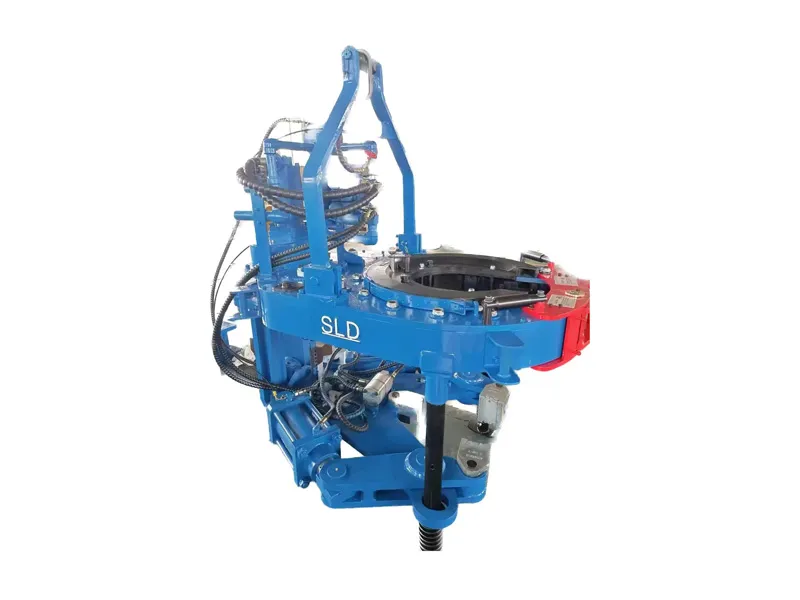Bucking Unit Safety Operating Procedures
Browse services
- Petroleum and Gas
- What are the advantages of using a Bucking Unit?
- Common Bucking Unit Operation Errors and How to Avoid Them?
- What are the safety checks before operating a Bucking Unit?
- Bucking Unit Safety Operating Procedures
- How to Use the Operator Panel to Control a Bucking Unit
- How to Calibrate a Bucking Unit?
- What preparations are needed before using the Bucking Unit?
- What is the operating procedure of the Bucking Unit?
- Common faults and troubleshooting methods during the use of Bucking Unit
- How should I replace worn parts of the Bucking Unit?
- How to maintain the electronic control system of the Bucking Unit?
- How does Bucking Unit handle oil leaks?
23 Aug
Bucking units are essential equipment in many manufacturing industries, primarily used to control torque and tightening processes, ensuring secure and safe connections. Due to their high-precision mechanical movements and high torque output, improper operation can easily lead to equipment damage, product quality issues, and even safety threats to operators. Therefore, establishing strict safety operating procedures is crucial to ensuring the proper operation of the equipment and the personal safety of operators.
Personnel Qualifications and Training Requirements
Operator Qualifications
Operators operating bucking units must undergo professional training and be familiar with the equipment's structure, performance, and operating procedures.
Unauthorized or unauthorized access to the equipment is prohibited.
Operators must pass a safety operation examination and obtain a certificate before they can begin operations.
Training Content
Theoretical knowledge: Equipment operating principles, safety risks, and emergency response.
Practical operation: Equipment startup and shutdown procedures, parameter adjustment, and emergency shutdown procedures.
Safety awareness: Use of personal protective equipment, accident case analysis, and safety behavior standards.
Regular Refresher Training
Regular safety knowledge refresher training and operator skills assessments ensure personnel are familiar with the latest safety regulations. Violators should be warned and retrained.
Equipment Inspection and Maintenance Procedures
Equipment Inspection
Before the start of each shift, the Bucking Unit must be thoroughly inspected to ensure the mechanical structure, transmission components, control system, and lubrication system are intact.
Check for loose fasteners and electrical wiring.
Confirm that the emergency stop button and alarm system are in effective condition.
Lubrication and Maintenance
Regularly add and replace lubricants according to the equipment manual to prevent excessive wear of mechanical components.
Lubrication points should be kept clean and free of dust and foreign matter.
Cleaning and Maintenance
Keep equipment surfaces clean to prevent accumulation of oil and debris that could affect the operating panel and mechanical movement.
Clean guide rails and moving parts to ensure smooth operation.
Regular Calibration
Periodically calibrate the torque sensor and control system to ensure the accuracy of the equipment's output parameters.
Calibration should be performed by professional technicians, and the results should be recorded.
Safety Operating Procedures
1. Operating Environment Requirements
The operating area should be kept clean and tidy, free of obstructions and debris. Maintain good lighting to ensure clear vision for operators.
Prevent moisture from forming in the work area to prevent electrical equipment from shorting out.
2. Personal Protective Equipment
Operators must wear protective gloves, safety glasses, non-slip shoes, and other necessary protective equipment.
Hair should be tied back to avoid entanglement with rotating parts.
Do not wear loose clothing or jewelry while operating the equipment.
3. Pre-Startup Preparation
Confirm that the equipment is in good condition and all protective devices are properly installed.
Check that the parameter settings on the operation panel meet process requirements, especially the torque and speed settings.
Ensure that no one or other personnel are in the work area and away from the danger zone.
Check that the emergency stop button is sensitive and effective.
4. Safety Precautions During Operation
Do not touch moving parts or rotating shafts during operation.
Do not adjust mechanical components or remove protective covers while the equipment is running.
Immediately stop the machine for inspection if any unusual sounds, vibrations, or alarms are heard.
Follow the equipment operating procedures and do not skip or simplify steps.
Stay focused and avoid distractions during operation. 5. Shutdown Procedures
Normal shutdowns should be performed by gradually slowing down and stopping according to the control panel instructions to avoid equipment damage caused by emergency stops.
After shutdown, disconnect the main power supply to prevent accidental startup.
Before performing equipment maintenance, ensure that the power is completely off to prevent accidental startup.
6. Equipment Maintenance and Repair
Maintenance personnel must disconnect the power supply and display warning signs.
Use tools and accessories that meet specifications to prevent unauthorized repairs by non-professionals.
After repairs are completed, perform functional tests to confirm the safety and reliability of the equipment.
Maintain detailed maintenance records for safety tracking.
Emergency Procedures
Equipment Alarms
When an equipment alarm occurs, the operator must immediately stop operation and determine the cause of the alarm.
Take appropriate measures based on the alarm type, such as mechanical jams or electrical failures, and promptly report to the maintenance department.
Emergency Shutdown Procedures
In the event of a dangerous situation, press the emergency stop button to shut off power.
Remain calm and quickly restore the equipment to a safe state.
Evacuate personnel to prevent injury.
Emergency Measures for Injuries
Immediately disconnect the power supply to the equipment to prevent secondary injuries. Provide emergency first aid to injured personnel and contact medical facilities if necessary.
After an accident occurs, report it to the relevant authorities as required and initiate an accident investigation.
Fire and Other Safety Accidents
Equip appropriate fire-fighting equipment and ensure operators are familiar with its use.
In the event of a fire, immediately activate the fire-fighting system and organize evacuation.
Call the fire department promptly and cooperate with the fire department.
Special Safety Precautions
Guards and Safety Doors
All rotating parts must be equipped with guards to prevent human contact with hazardous areas.
If the equipment is equipped with a safety door, it will automatically shut off power when the door is opened to prevent accidental operation.
Safety Interlocks
Equip mechanical and electrical interlocks to prevent the equipment from being started without the guards engaged.
Regularly check the interlocks to ensure reliability and effectiveness.
Alarm System Maintenance
Regularly test the equipment's alarms, including audible, visual, and display alarms, to ensure timely alerts to operators.
Environmental Safety Monitoring
Regularly monitor the operating environment for hazardous gases, temperature, and humidity to ensure a safe working environment. VII. Common Violations and Consequences
Operating equipment without proper training can easily lead to misoperation and accidents.
Neglecting equipment maintenance and calibration can degrade equipment performance and increase the risk of failure.
Failure to wear protective equipment during operation can cause personal injury.
Improperly removing protective devices increases the risk of mechanical injury.
Continuing to operate equipment despite warning signals can result in serious damage or accidents.
Violations not only threaten operator safety but also impact the company's production efficiency and reputation. Violations must be dealt with seriously and safety management must be strengthened.
Safety Management and Responsibilities
Division of Safety Responsibilities
Companies should clearly define safety management responsibilities and appoint dedicated safety management personnel.
Operators must strictly follow safety operating procedures.
Maintenance personnel are responsible for equipment maintenance to ensure safety performance.
Safety Inspections and Supervision
Perform regular safety inspections and promptly rectify any hidden dangers.
Monitor equipment usage and operating behavior to prevent violations.
Cultivating a Safety Culture
Strengthen safety education to foster a safe working environment.
Encourage employees to proactively report safety hazards and provide improvement suggestions.
Summary
Bucking Unit safety operating procedures are the cornerstone for ensuring stable equipment operation and personnel safety. Through rigorous personnel training, standardized operating procedures, scientific equipment maintenance, and comprehensive emergency response measures, accidents can be effectively avoided and the company's safety management level can be enhanced.
Operators should establish a "safety first" philosophy and conscientiously implement all safety procedures, ensuring meticulous attention to detail and clear responsibilities. Company management should also continuously improve the safety management system, foster a strong safety culture, and jointly create a safe, healthy, and efficient production environment.

 Português
Português


